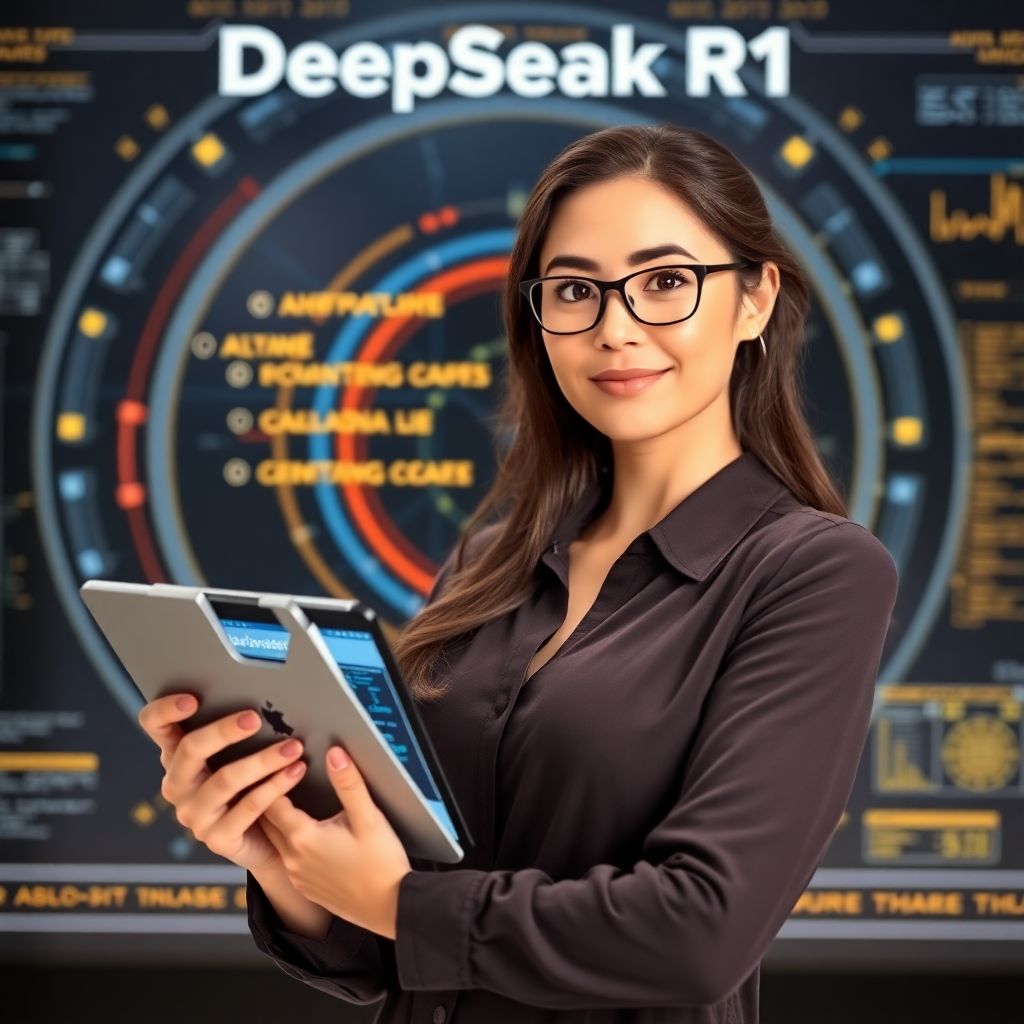Introduction
What if an AI model could outperform giants like OpenAI’s GPT-4 in math, coding, and creative writing—all while being open-source and cost-efficient? Enter DeepSeek R1, the first-generation reasoning model by DeepSeek AI, designed to tackle complex tasks across multiple domains. Whether you’re a developer, researcher, or AI enthusiast, this article dives deep into why DeepSeek R1 is revolutionizing the AI landscape and how it stacks up against competitors like OpenAI’s o1 model.
What is DeepSeek R1?
DeepSeek R1 is a cutting-edge reasoning model developed by DeepSeek AI. Built on the DeepSeek-V3 architecture, it leverages a Mixture of Experts (MoE) framework to deliver unparalleled performance in math, coding, and language tasks. With 37 billion activated parameters and a total of 671 billion parameters, this model is a powerhouse of computational intelligence.
Key highlights of DeepSeek R1 include:
A 128K token context length, enabling it to handle long-context tasks with ease.
Training via large-scale reinforcement learning (RL) and supervised fine-tuning (SFT) for enhanced reasoning and readability.
Open-source availability, making it accessible for both research and commercial use.
DeepSeek R1 vs. OpenAI o1: A Head-to-Head Comparison
When it comes to AI models, DeepSeek R1 and OpenAI’s o1 are often compared. Here’s how they stack up:
Reasoning Capabilities
Both models excel in multi-step reasoning and complex problem-solving. However, DeepSeek R1 has a slight edge in mathematical reasoning, scoring 97.3% on the MATH-500 benchmark compared to o1’s 96.4%.
Coding Performance
While OpenAI’s o1 leads in most coding benchmarks, DeepSeek R1 shines in specialized tests like SWE Verified and LiveCodeBench, showcasing its versatility.
Creative Writing
DeepSeek R1 stands out in creative writing tasks, offering expressive and engaging outputs that rival even the best AI models.
Cost and Accessibility
One of DeepSeek R1’s biggest advantages is its cost efficiency. It reportedly achieves performance parity with OpenAI’s models at just 3% of the cost. Additionally, its open-source nature under the MIT License makes it highly accessible for developers and organizations.
Key Features of DeepSeek R1
1. Mixture of Experts (MoE) Architecture
The DeepSeek R1 model utilizes a MoE architecture, which allows it to activate only the necessary parameters for a given task. This results in faster processing and reduced computational costs.
2. Reinforcement Learning and Fine-Tuning
The model is trained using Group Relative Policy Optimization (GRPO), a variant of reinforcement learning that enhances its reasoning capabilities. Supervised fine-tuning further improves readability and coherence.
3. Long-Context Understanding
With a context length of 128K tokens, DeepSeek R1 can handle extensive inputs, making it ideal for tasks like summarization, editing, and long-form content creation.
4. Open-Source Availability
DeepSeek has open-sourced DeepSeek R1, along with six distilled models based on Llama and Qwen architectures. This move democratizes access to advanced AI tools, fostering innovation across industries.
DeepSeek R1-Zero: The Pure Reinforcement Learning Model
For those seeking a more experimental approach, DeepSeek R1-Zero offers a unique proposition. Trained purely via reinforcement learning without any supervised fine-tuning, this model exhibits strong reasoning capabilities but may produce less coherent outputs.
Key Differences Between R1 and R1-Zero
Training: R1-Zero relies solely on RL, while R1 combines RL with SFT for better readability.
Output: R1-Zero can mix languages and lack structure, whereas R1 provides more user-friendly results.
Performance: Both models achieve state-of-the-art reasoning, but R1 is better suited for real-world applications.
Real-World Applications of DeepSeek R1
DeepSeek R1 is not just a research marvel—it’s a practical tool for various applications:
Creative Writing: Generate engaging content, stories, and marketing copy.
Coding Assistance: Solve complex coding problems and optimize algorithms.
Mathematical Reasoning: Tackle advanced math problems with precision.
Summarization and Editing: Process long documents and refine them into concise outputs.
Why DeepSeek R1 is a Cost-Effective Alternative
One of the standout features of DeepSeek R1 is its cost efficiency. By processing only 37 billion parameters per calculation, it significantly reduces computational overhead compared to models like OpenAI’s o1. This makes it an attractive option for startups, researchers, and businesses looking to leverage AI without breaking the bank.
Final Thoughts: Is DeepSeek R1 the Future of AI?
DeepSeek R1 is a groundbreaking model that combines advanced reasoning, cost efficiency, and open-source accessibility. Whether you’re comparing it to OpenAI’s o1 or exploring its unique features, it’s clear that DeepSeek R1 is a force to be reckoned with in the AI space.
Key Takeaways:
DeepSeek R1 excels in math, coding, and creative writing tasks.
It’s open-source and cost-efficient, making it accessible for diverse applications.
The model’s MoE architecture and reinforcement learning techniques set it apart.
DeepSeek R1-Zero offers a pure RL approach for experimental use cases.
Ready to explore the potential of DeepSeek R1? Share your thoughts and favorite insights in the comments below!
Forther Reading:
How to Use DeepSeek AI to Build a Profitable Online Business in 2025
















IOS oyunları için kullanıcı geri bildirimleri 🌟 FreeSpin ile Kazançlar Yükselsin, Eğlence Hiç Bitmesin! http://www.jadekusadasi.com/
zkd73m
Does your website have a contact page? I’m having trouble locating it but, I’d like to send you an email. I’ve got some creative ideas for your blog you might be interested in hearing. Either way, great blog and I look forward to seeing it improve over time.
Hello.This post was really interesting, especially since I was browsing for thoughts on this matter last Wednesday.